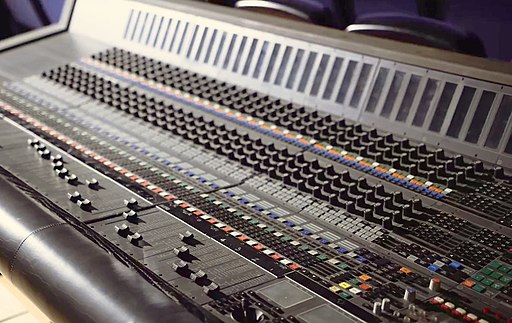WORKPRINT STUDIOS BLOG POST #7 - Sound in Film
Filmmaking Blog
Welcome to the Workprint Studios Blog.
WORKPRINT STUDIOS BLOG POST #7 - Sound in Film
The Silent Era of Film
Silent films were the norm for many years in the movie industry. Movies were made with only visuals, with no audible dialogue or sound effects. The audience had to rely solely on visual cues to understand the story, which made silent films a unique and fascinating genre. However, with the advent of the talkies, sound became an integral part of the cinematic experience. Today, sound design plays a critical role in the creation of movies, enhancing the visuals and immersing the audience in the story.
Sound in Movies
Location sound, dialogue, and Foley are the three main types of sound used in films. Location sound is the audio recorded on set while shooting. It includes sounds like the rustling of leaves, the sound of footsteps, or the chirping of birds. These sounds are essential in creating a realistic environment that makes the audience feel like they are in the same location as the characters. Dialogue is the verbal communication between characters in the movie. The dialogue must be clear and audible, allowing the audience to understand the plot and the characters' motivations. Foley is the art of creating sound effects that cannot be captured during filming, like footsteps or the sound of a door closing. Foley artists use everyday objects to create these sounds, adding to the realism of the movie.
Types of Sound in Film: Location, Dialogue, and Foley
Sound design is a critical part of the post-production process, and there are many techniques used to produce the final result. Sound editing is the process of selecting and arranging the audio tracks to create a cohesive soundscape that complements the visuals. Sound mixing is the process of balancing and adjusting the levels of the different audio tracks to create a harmonious blend. A sound designer may also use sound effects libraries to find the perfect sound effect for a particular scene. These libraries contain thousands of pre-recorded sounds that can be used to enhance the audio of a movie.
Techniques Used in Sound Design for Film
Sound design also plays a crucial role in the emotional impact of a movie. The right soundtrack or sound effect can elicit a specific emotional response from the audience, whether it's fear, excitement, or sadness. Sound can also be used to create tension or suspense, like the use of a heartbeat sound effect in a horror movie. The sound design can be just as important as the visuals in creating a compelling and engaging story.Title: The Impact of Sound on the
Cinematic Experience
In conclusion, sound design is an essential component of the cinematic experience. From location sound to Foley to sound editing and mixing, every aspect of sound design plays a critical role in creating a realistic and engaging audio experience for the audience. Sound can enhance the emotional impact of a movie, create tension and suspense, and immerse the audience in the story. As technology continues to advance, sound design will only become more critical in creating the ultimate cinematic experience. It's a fascinating field that requires a deep understanding of audio engineering, creativity, and attention to detail. The next time you watch a movie, pay close attention to the sound design, and you'll appreciate just how much work goes into creating the perfect audio experience.
DID YOU KNOW?
- The term "Foley" comes from Jack Foley, a sound effects artist who pioneered the use of synchronized sound effects in movies during the early 1900s.
- The iconic "Wilhelm scream" sound effect has been used in over 400 movies, including the Star Wars and Indiana Jones franchises.
- In the movie Gravity, the sound designer Steven Price created a unique sound mix that simulated the lack of sound in space, using vibrations and other audio techniques.
- The sound of the velociraptors in Jurassic Park was created by mixing together various animal sounds, including tortoises mating, dolphins, and walruses.
- In the movie Blade Runner, sound designer Frank Serafine created the sound of the film's flying cars by recording a Hoover vacuum cleaner and then manipulating the audio.
- The sound of the TIE fighter in Star Wars was created by recording the sound of an elephant call and then processing it through various audio effects.
- The sound of the giant footsteps in the original Godzilla movie was created by recording the sound of a leather glove being rubbed against a double bass string.
Where you can find us.









